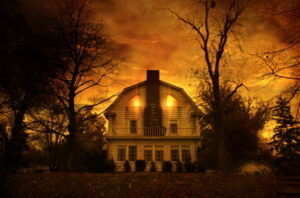Halloween, a holiday that traces its origins back to ancient Celtic rituals and Roman festivals, has undergone a fascinating evolution, culminating in the vibrant and culturally rich celebration that is known as modern Halloween in America today. Stemming from the Celtic festival of Samhain, which marked the transition from the harvest season to winter and believed to blur the boundary between the living and the dead, Halloween has absorbed influences from various cultures, including Roman, Christian, and immigrant traditions. The Halloween we now embrace in the United States is a dynamic blend of these diverse customs and contemporary expressions of creativity and community.
In modern America, Halloween has become a vibrant tapestry of festivities. It is characterized by elaborate costumes ranging from the spooky to the whimsical, children’s gleeful cries of “trick or treat” as they embark on candy-collecting adventures, and homes adorned with intricately carved jack-o’-lanterns and spooky decorations. Haunted attractions, pumpkin patches, and Halloween-themed parties add to the excitement. Beyond the playful spirit of the holiday, Halloween also reflects a deep cultural diversity, with communities across the nation incorporating their own customs and traditions into the festivities. Modern Halloween stands as a testament to the enduring fascination with the supernatural, the communal spirit, and the ever-evolving nature of tradition in American culture.
Table of Contents
Halloween: A Global History
Halloween, celebrated on October 31st each year, is a holiday with a rich and fascinating history that dates back centuries. While it is commonly associated with spooky costumes, candy, and haunted houses, its origins are deeply rooted in ancient traditions and have evolved significantly over time.
1. The Celtic Festival of Samhain
The history of Halloween can be traced back to the ancient Celtic festival of Samhain (pronounced “sow-in”), which marked the end of the harvest season and the beginning of winter.
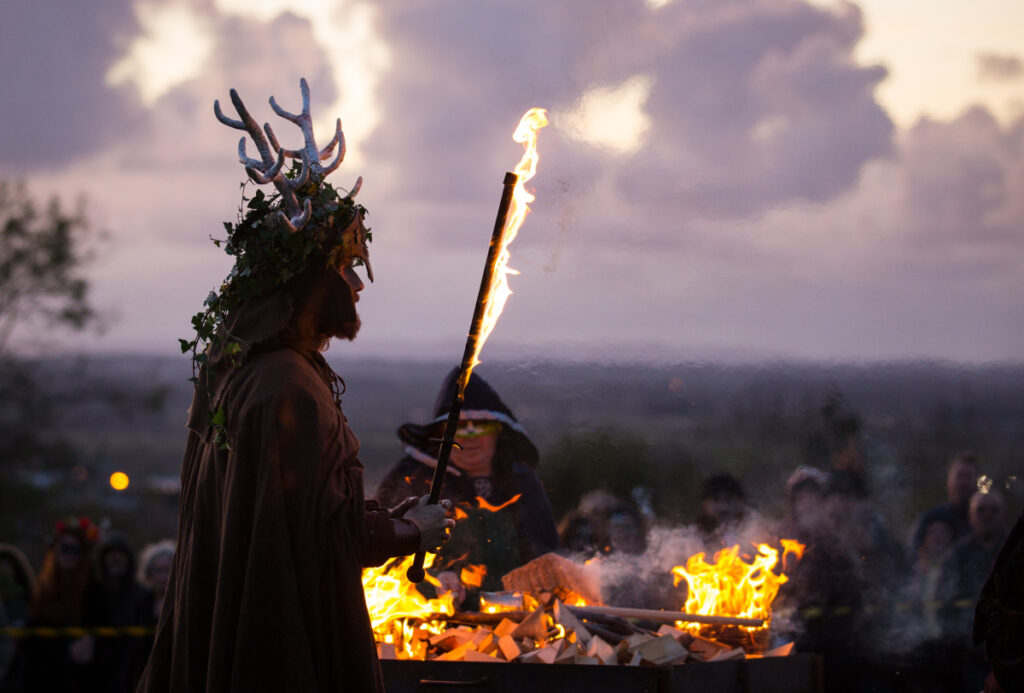
The origins of Halloween can be traced back over two thousand years to the Celtic people who inhabited regions of what are now Ireland, the United Kingdom, and northern France. The Celtic calendar was divided into two major seasons: the light half and the dark half. Samhain marked the transition from the light half to the dark half, as it fell between the autumn equinox and the winter solstice, typically around October 31st.
The Celtic Beliefs:
- Thin Veil Between Worlds: The Celts believed that during Samhain, the boundary between the world of the living and the world of the dead became thin and porous. This belief gave rise to the idea that spirits, both benevolent and malevolent, could freely move between these realms during this time.
- Harvest’s End: Samhain was a time to celebrate the end of the harvest season. Crops were gathered, and livestock were brought in from the fields to prepare for the harsh winter months ahead.
- Bonfires and Offerings: Central to the Samhain celebration were bonfires, which were believed to have protective and purifying qualities. People would light these fires to ward off evil spirits and to honor their deceased ancestors. Offerings of food and other valuables were placed near the bonfires as gifts to the spirits.
- Costumes and Disguises: The Celts would often dress in costumes made from animal hides and heads to mimic the appearance of spirits. This practice was intended to confuse and appease any malevolent spirits wandering about.
- Divination: Samhain was also seen as a time when the veil between the present and future was thin. People would engage in divination practices, such as apple bobbing or looking into a mirror in a dimly lit room, to gain insights into their future or connect with the spirit world.
Honoring the Dead
One of the central themes of Samhain was the remembrance of deceased loved ones. The Celts believed that their ancestors’ spirits returned to visit their homes during this time. To honor them, they would set a place at the table, light candles, and leave food offerings out for these returning spirits. This tradition laid the foundation for the modern practice of leaving treats out for Halloween.
Christian Influence
When Christianity began to spread into Celtic lands, it sought to co-opt existing pagan festivals and incorporate them into the Christian calendar. In the 7th century AD, Pope Boniface IV designated November 1st as All Saints’ Day, a day to honor saints and martyrs. The night before, October 31st, became known as All Hallows’ Eve, eventually morphing into Halloween. The idea was to shift the focus from pagan spirits to Christian saints.
Summary
The ancient Celtic festival of Samhain serves as the cornerstone of Halloween’s origins. It was a time of celebration and reverence for the changing seasons, a belief in the thinning of the boundary between the living and the dead, and a deep connection to ancestral spirits. Over time, these traditions and beliefs evolved, merged with other cultural influences, and ultimately gave rise to the modern, globally celebrated holiday of Halloween.
Read more about Historical Samhain here: History of Samhain
2. Roman Festivals and Influence
When the Romans conquered Celtic territories in the first century AD, they merged their own festivals with local customs. This fusion resulted in the Roman festival of Feralia, which honored the passing of the dead, and Pomona, a celebration of the Roman goddess of fruit and trees.
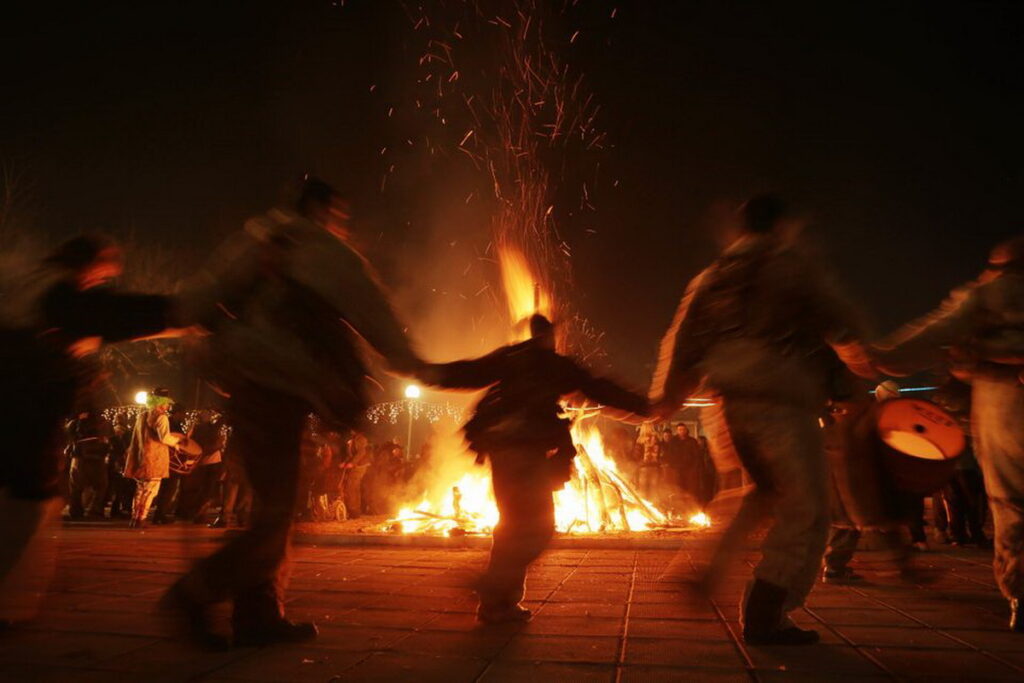
When the Romans expanded their empire into Celtic regions in the first century AD, they encountered and incorporated various local traditions and festivals into their own culture. This cultural blending significantly influenced the evolution of Halloween.
- Feralia: One of the key Roman contributions to Halloween’s development was the festival of Feralia. Feralia was an ancient Roman holiday held in late February to honor the deceased, specifically the spirits of the dead. During this festival, families would visit the tombs of their ancestors, make offerings of food, and perform rituals to ensure the peaceful rest of the departed.
- Pomona: The Roman festival of Pomona also played a role in shaping Halloween traditions. Pomona was dedicated to the Roman goddess of fruit and trees, Pomona. She was often depicted with symbols of fruit, particularly apples. This festival celebrated the bountiful harvest and the fruits of the land. Apples were associated with this celebration, and this connection between apples and harvest found its way into Halloween customs.
Bobbing for Apples: The tradition of bobbing for apples, a classic Halloween game, likely has its origins in the Roman festival of Pomona. The Celts, who celebrated Samhain, incorporated this apple-related activity into their own festivities. It later became a popular Halloween game in both Europe and America. - Roman Religious Syncretism: The Roman Empire was known for its practice of religious syncretism, which involved blending the beliefs and customs of conquered peoples with Roman religious practices. As a result, some Celtic religious elements likely fused with Roman traditions during the Roman occupation of Celtic lands, contributing to the development of Halloween’s distinctive blend of customs.
Summary:
The Roman influence on Halloween can be seen primarily through the incorporation of Feralia’s reverence for the dead and the connection between apples and the harvest from the festival of Pomona. These elements added depth to the evolving Halloween traditions, further emphasizing the holiday’s themes of remembrance, the changing of seasons, and the merging of cultural beliefs. Over time, these Roman contributions blended with Celtic, Christian, and later American customs to create the multifaceted celebration of Halloween that we know today.
3. Christian Influence
In the 7th century AD, the Christian Church attempted to replace pagan festivals with Christian holidays. November 1st was designated as All Saints’ Day (also known as All Hallows’ Day), a day to honor Christian saints and martyrs.
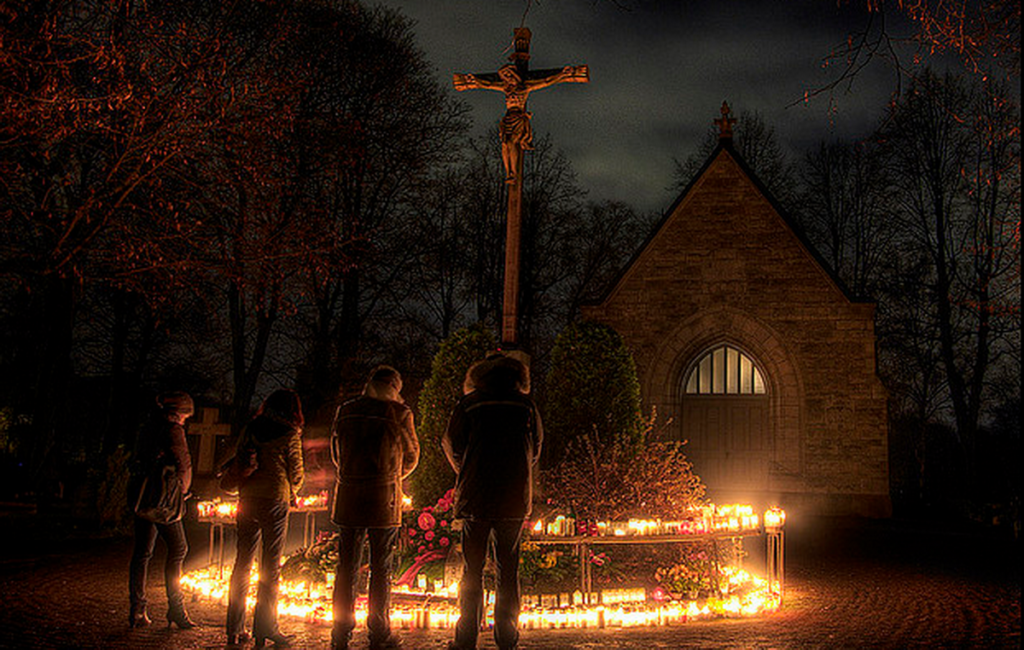
The Christian influence on Halloween is a significant aspect of its history, as the holiday evolved from pagan and Celtic traditions to incorporate Christian elements. This transformation is evident in the transition from the Celtic festival of Samhain to the Christian observance of All Saints’ Day and All Hallows’ Eve.
1. All Saints’ Day (November 1st):
In the 7th century AD, the Christian Church sought to Christianize existing pagan festivals by replacing them with Christian holidays. Pope Boniface IV designated November 1st as All Saints’ Day, also known as All Hallows’ Day. This day was meant to honor all the saints and martyrs who did not have their own feast days on the Christian calendar.
2. All Hallows’ Eve (October 31st):
The night before All Saints’ Day, October 31st, came to be known as All Hallows’ Eve. “Hallow” is an old English word for “saint” or “holy person.” Over time, this term evolved into “Halloween.” All Hallows’ Eve served as a Christian vigil, a time of preparation and reflection before the holy day.
3. Christianization of Samhain:
The Christian Church strategically timed All Saints’ Day and All Hallows’ Eve to coincide with the Celtic festival of Samhain, which was already widely celebrated in the regions where Christianity was spreading. By doing so, the Church aimed to provide a Christian alternative to the pagan customs associated with Samhain.
Christian Elements in Halloween:
Several aspects of Christian theology and practices found their way into Halloween as a result of this Christian influence:
a. Honoring the Saints: All Saints’ Day became an opportunity for Christians to honor and remember their saints and martyrs, somewhat mirroring the Celtic tradition of honoring deceased ancestors during Samhain. This focus on remembrance and reverence is a key element of modern Halloween.
b. Protective Prayers: Just as the Celts believed in the thinning of the veil between the living and the dead during Samhain, some Christians would use All Hallows’ Eve to offer prayers for the souls of the departed. This practice of prayer for the deceased has parallels with the Christian tradition of praying for the souls of the departed.
c. All Souls’ Day (November 2nd): In addition to All Saints’ Day, the Christian Church also established All Souls’ Day on November 2nd. This day was dedicated to praying for all souls in purgatory, with the hope of aiding their journey to heaven. All Souls’ Day further emphasized the Christian emphasis on the afterlife and the remembrance of the deceased.
Summary:
The Christian influence on Halloween is most evident in the adoption of All Saints’ Day and All Hallows’ Eve, which provided a Christian alternative to the Celtic festival of Samhain. This influence helped shape the holiday into a time of remembrance, reflection, and reverence for the deceased, with some customs such as lighting candles, offering prayers, and visiting cemeteries echoing Christian practices. While Halloween retains many of its ancient and pagan elements, it also carries a Christian layer of significance, making it a complex and culturally rich holiday.
4. Medieval Halloween
During the medieval period, Halloween evolved into a blend of Christian and pagan traditions. People would light bonfires and wear costumes to ward off roaming spirits.
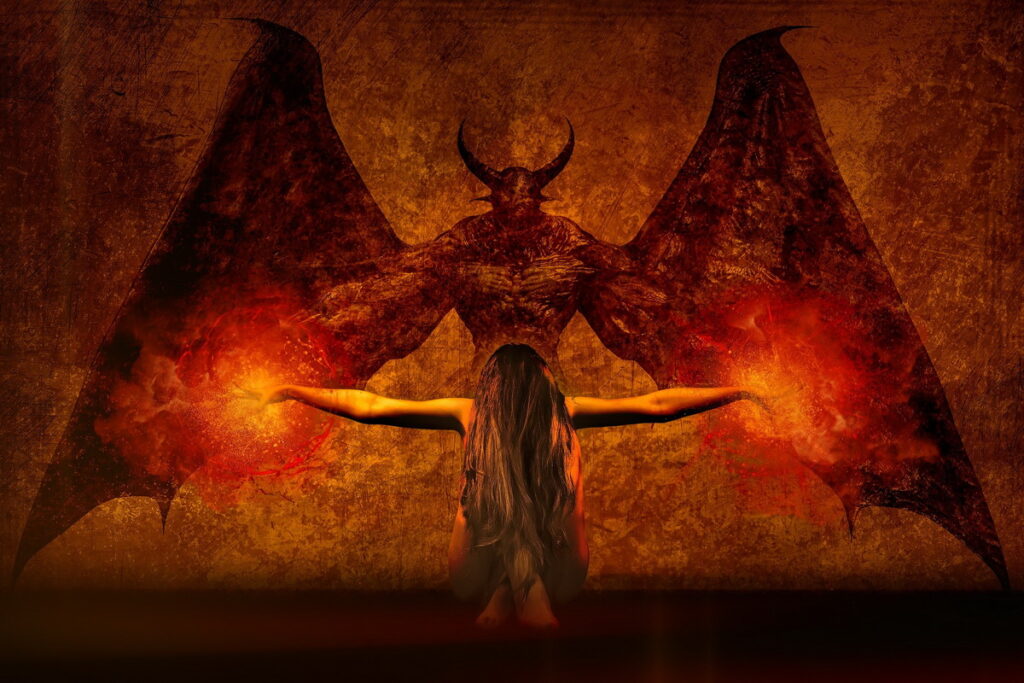
The Medieval period saw the evolution of Halloween as it transitioned from its ancient Celtic and Roman roots into a more structured and Christianized holiday. During this era, Halloween became a blend of traditions and beliefs, incorporating elements from various cultural influences. Let’s explore how Medieval Halloween was celebrated:
1. Christianization of Samhain: As previously mentioned, the Christian Church sought to replace pagan festivals with Christian holidays. Samhain, being one of the most significant Celtic festivals, was an obvious target for Christianization. The Church established All Saints’ Day on November 1st and All Hallows’ Eve (Halloween) on October 31st, aligning them with the timing of Samhain. This provided a Christian context for the traditional activities associated with the Celtic festival.
2. All Hallows’ Eve Vigil: In Medieval Europe, Halloween (All Hallows’ Eve) was considered a solemn vigil. People attended church services, lit candles, and offered prayers for the souls of the departed. This practice of lighting candles had both Christian and pagan origins, symbolizing the hope of guiding lost souls and the ancient use of bonfires to ward off evil spirits.
3. Souling: The Medieval practice of “souling” was a precursor to modern-day trick-or-treating. On Halloween night, poor individuals, often children, would go door-to-door and offer prayers for the souls of the deceased in exchange for food, money, or small gifts. This tradition blended Christian elements (prayers for the souls) with a form of charity or almsgiving.
4. Guising and Costumes: The practice of wearing costumes and disguises during Halloween can be traced back to the Middle Ages. People would dress as saints, angels, or demons, often with the intention of warding off evil spirits. This tradition was a blend of the Christian emphasis on saints and the ancient belief in the thinning of the boundary between the living and the dead.
5. Bonfires and Feasting: Bonfires, which had been a part of Samhain and Roman traditions, continued to be lit during Medieval Halloween celebrations. These fires were not only for protection but also served as a focal point for the community to gather. Feasting was also an important aspect of Medieval Halloween, with people sharing meals and communal gatherings.
6. Divination and Superstitions: Medieval Halloween was a time when various divination rituals and superstitions were prevalent. People believed that the boundary between the worlds was thin, making it an opportune time for fortune-telling and seeking glimpses into the future. Common divination practices included apple bobbing, mirror-gazing, and dream interpretation.
7. Incorporation of Folk Beliefs: Medieval Halloween was influenced by a mix of folk beliefs and superstitions that varied by region. Some areas had their own unique customs, such as the carving of turnips into lanterns (the precursor to the jack-o’-lantern) in Ireland, while others focused on protective rituals or the appeasement of spirits.
Summary:
Medieval Halloween marked a period of transition for the holiday, as it assimilated elements from Celtic, Roman, and Christian traditions. It became a time of solemn reflection, prayer, community gatherings, and superstitious practices. The blending of these diverse influences laid the foundation for the modern, globally celebrated Halloween, with its unique combination of reverence for the dead, playful costume-wearing, and a touch of the supernatural.
5. Colonial America
Halloween was not widely celebrated in early colonial America due to the staunch Protestant beliefs of the Puritans. However, as more diverse European immigrants arrived, they brought their Halloween traditions with them.
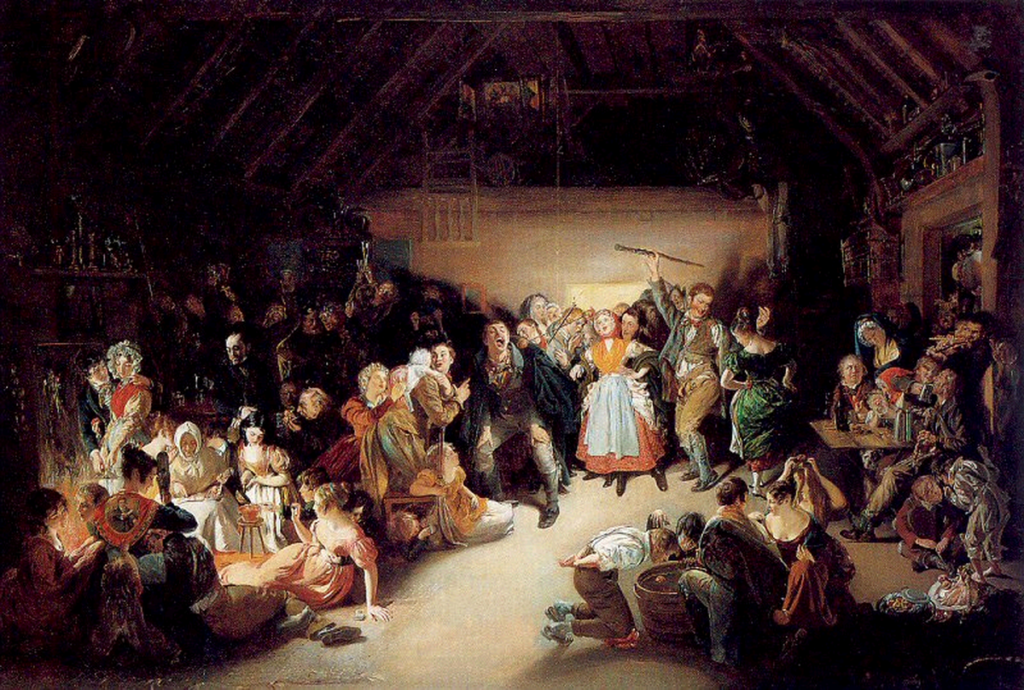
The early Colonial period in America saw the evolution of Halloween from its European roots into a distinct American holiday. Halloween was not widely celebrated among the early American colonists, primarily due to the religious beliefs and customs of the Puritans and other Protestant groups. However, as more diverse European immigrants arrived in America, they brought with them their Halloween traditions, which gradually merged with existing customs. Here’s a closer look at Halloween during the early Colonial period in America:
1. Puritan Influence: The early English settlers who came to America, particularly the Puritans, held strong Protestant beliefs that discouraged the celebration of Halloween. Puritans rejected what they saw as pagan and superstitious practices and sought to establish a strict, religiously centered way of life.
2. Cultural Diversity: As the colonies grew and attracted settlers from various parts of Europe, the cultural diversity increased. Immigrants from Scotland, Ireland, Wales, and other regions where Halloween was celebrated brought their own customs and traditions with them. These traditions began to intermingle and evolve in the New World.
3. Merging of Traditions: Over time, the European immigrants’ Halloween traditions began to blend with other customs and festivals in America, creating a unique American Halloween. Some of these traditions included:
- Harvest Festivals: Harvest festivals were already established in the colonies, and Halloween’s association with the end of the harvest season allowed for the incorporation of harvest-themed activities into Halloween celebrations.
- Souling and Guising: The practice of “souling” and “guising” gradually transformed into something akin to modern-day trick-or-treating. Children would go door-to-door, sing songs, recite verses, or perform tricks in exchange for food or small gifts.
- Bonfires: Bonfires, a prominent feature of Halloween in Europe, continued to be lit in some American communities. They served as a way to bring people together and ward off evil spirits, although their significance diminished over time.
4. Influence of Literature and Folklore: During the early Colonial period, stories and folklore related to witches, ghosts, and supernatural creatures began to circulate. These tales contributed to the eerie and mysterious aspects of Halloween and laid the groundwork for later Halloween traditions, such as ghost stories and haunted houses.
5. Transition to More Community-Oriented Celebrations: In the 19th century, Halloween gradually shifted from private, family-centered observances to more community-oriented festivities. Parades, parties, and events that brought neighbors together became common during this time.
6. Emergence of Commercial Halloween: The late 19th and early 20th centuries saw the commercialization of Halloween, with the sale of costumes, decorations, and confectionery items. Halloween parties, games, and contests also became popular, reflecting a more secular and playful approach to the holiday.
Summary:
The early Colonial period in America marked a transition for Halloween as it evolved from the rigid religious attitudes of the Puritans to a more diverse and inclusive celebration influenced by various European traditions. While Halloween was not widely embraced in its early years in America, the blending of customs and the emergence of new traditions eventually led to the development of the American Halloween we know today—a holiday characterized by costumes, candy, and community-centered festivities.
5. Jack-o’-Lanterns and Folklore
One of the most iconic symbols of Halloween, the jack-o’-lantern, has its roots in Irish folklore. The tale of “Stingy Jack,” a man who tricked the Devil and was doomed to wander the Earth with only a lit turnip, was popularized in Ireland.
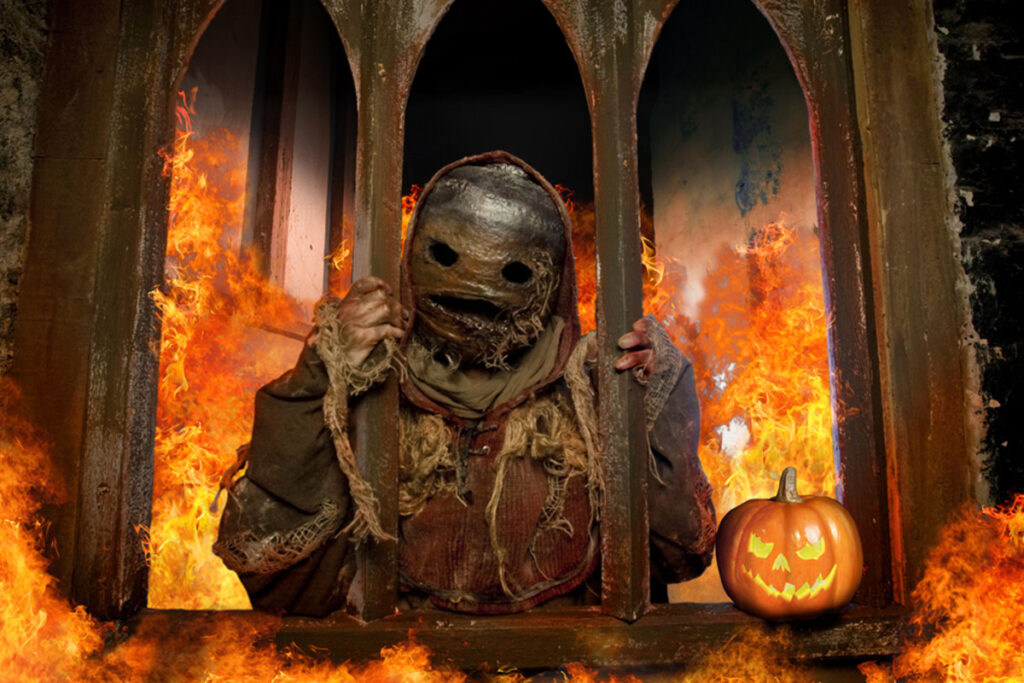
Jack-o’-Lanterns and folklore are integral components of Halloween’s rich history, contributing to the holiday’s distinctive character and traditions. These elements are deeply rooted in both European folklore and American Halloween customs.
1. Origin in Irish Folklore: The tradition of carving jack-o’-lanterns has its origins in Irish folklore and is closely tied to the holiday of Halloween. The term “jack-o’-lantern” itself comes from an old Irish folktale about a character named “Stingy Jack.”
2. The Legend of Stingy Jack: According to the legend, Stingy Jack was a cunning and miserly individual who, through a series of clever tricks, managed to outwit the Devil on multiple occasions. When Jack eventually passed away, he was neither deemed worthy of heaven nor hell. Instead, he was condemned to wander the dark night with only a lit turnip to light his way. The carved turnip was Jack’s makeshift lantern, which earned him the name “Jack of the Lantern” or “Jack-o’-Lantern.”
The most popular version of the tale involves Jack first tricking the Devil into changing his form, then trapping him in his transfigured state. Jack then offered the Devil out of the deal in exchange for not taking his soul for a long time. Some longer versions of the story have the Devil being tricked 3 or 4 different times.
Eventually though, time caught up with Jack and he was unable to trick the Devil again. Stingy Jack was sentenced to roam the Earth for all eternity with nothing but an ember given to him by the Devil to light his way.
3. Transition to Pumpkins in America: When Irish immigrants arrived in North America, they found that pumpkins were more readily available and larger than turnips. As a result, they began carving pumpkins into lanterns to represent the spirit of Stingy Jack. The transition from turnips to pumpkins is how the iconic jack-o’-lanterns we know today came into existence.
Folklore and Halloween:
1. Ghost Stories and Legends: Halloween has long been associated with storytelling, especially ghost stories and legends of the supernatural. Folklore from various cultures often features tales of restless spirits, haunted houses, and encounters with otherworldly beings. These stories are an essential part of Halloween’s mystique, adding an element of spookiness to the holiday.
2. Haunted Houses and Paranormal Activity: Halloween folklore frequently includes themes of haunted houses and places. Folk legends often depict these locations as sites of tragedy or as dwellings for vengeful spirits. The concept of visiting haunted houses or creating haunted attractions is a direct reflection of this aspect of folklore.
3. Costumes and Transformation: The tradition of wearing costumes on Halloween has roots in European folklore, where it was believed that during this time, the veil between the living and the dead was thin. People would dress in costumes to mimic or appease spirits and avoid recognition by malevolent entities. This practice evolved into the playful costume-wearing we see today, where people transform into various characters for Halloween celebrations.
4. Superstitions and Divination: Folklore also includes superstitions and divination practices associated with Halloween. Activities like apple bobbing, mirror gazing, and predicting one’s future spouse’s identity were common folk practices during this holiday, reflecting a fascination with the supernatural and the unknown.
Summary:
Jack-o’-lanterns and folklore are intertwined with Halloween, connecting the holiday to its Celtic and European roots. The legend of Stingy Jack and the tradition of carving lanterns from turnips or pumpkins provide a visual symbol of Halloween’s eerie charm. Meanwhile, Halloween’s connection to folklore, ghost stories, and superstitions adds depth to the holiday, infusing it with a sense of mystery, excitement, and the supernatural. These elements contribute to the unique and enchanting character of Halloween that continues to captivate people of all ages.
5. Modern Halloween in America
In the late 19th and early 20th centuries, Halloween in America underwent a transformation. It became a more community-oriented holiday with parades, parties, and an emphasis on games and treats.
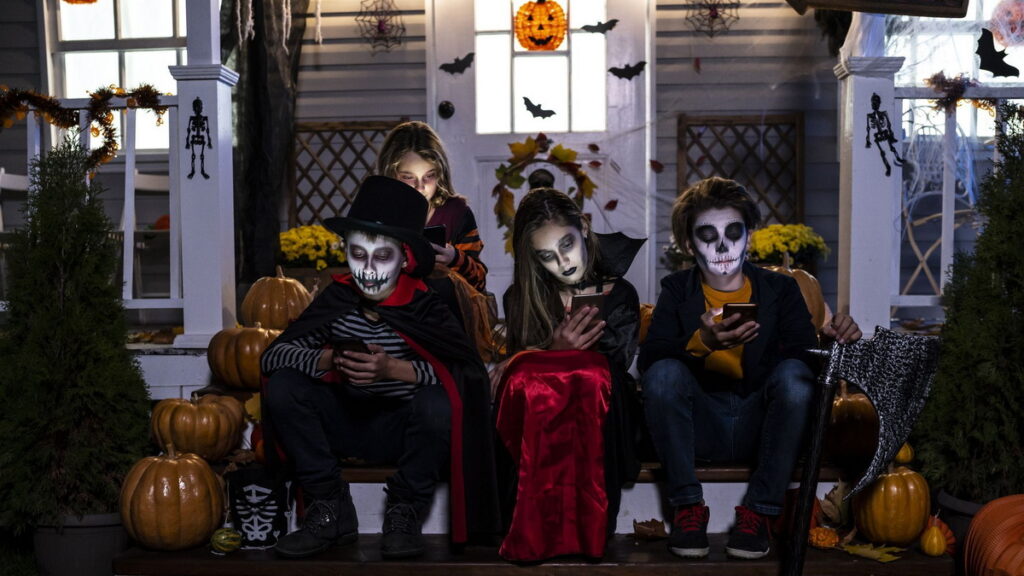
Modern Halloween in America is a vibrant and widely celebrated holiday that has evolved considerably from its ancient and European roots. It is a dynamic blend of traditions, customs, and cultural influences, and it has become a significant part of American culture. Here’s a detailed look at modern Halloween in the United States:
1. Costumes: Costumes are a central aspect of modern Halloween celebrations in America. People of all ages, from children to adults, don costumes that range from traditional spooky characters like witches, vampires, and zombies to popular culture figures, superheroes, and whimsical creatures. Costume parties and contests are common, and creativity knows no bounds.
2. Trick-or-Treating: Trick-or-treating remains one of the most iconic and beloved Halloween traditions in the U.S. Children dress up in costumes and go door-to-door in their neighborhoods, shouting “trick or treat” and receiving candy and other treats from homeowners. This practice promotes community interaction and creates a sense of excitement for youngsters.
3. Decorations: Halloween decorations have become increasingly elaborate. Homes are adorned with carved pumpkins (jack-o’-lanterns), fake cobwebs, skeletons, witches, and spooky lights. Many Americans invest time and effort in transforming their houses into haunted attractions for neighborhood children and visitors.
4. Haunted Attractions: Halloween has given rise to a thriving industry of haunted houses, hayrides, corn mazes, and other spooky attractions. These experiences offer a thrilling and immersive way for people to engage with the holiday’s eerie themes. Some are family-friendly, while others are geared toward older audiences seeking a more intense scare.
5. Pumpkin Carving: Carving pumpkins into jack-o’-lanterns remains a cherished tradition. Families gather to select pumpkins, carve intricate designs or simple faces, and illuminate them with candles or LED lights. Pumpkin patches and pumpkin-themed festivals are popular in the weeks leading up to Halloween.
6. Halloween Parties: Halloween parties are a common way for adults to celebrate the holiday. These gatherings often feature costume contests, themed decorations, spooky music, and a wide range of Halloween-themed food and drinks. It’s an opportunity for grown-ups to embrace the playful spirit of the holiday.
7. Horror Films and Media: The Halloween season sees a surge in the consumption of horror films, television shows, and literature. Horror movie marathons, haunted house reality TV shows, and Halloween-themed episodes of popular series add to the atmosphere of fright and excitement.
8. Fall Festivities: Modern Halloween is closely intertwined with the fall season. Many Americans embrace autumnal traditions like apple picking, hayrides, and visits to corn mazes as part of their Halloween celebrations.
9. Cultural Diversity: Halloween in America is inclusive of various cultural influences. Communities with diverse backgrounds often incorporate their own customs and traditions, resulting in a rich tapestry of celebrations that reflect the multicultural nature of the country.
10. Safety Concerns: In recent years, safety concerns have led to increased efforts to ensure a safe and enjoyable Halloween experience. Many communities establish designated trick-or-treating hours, and there is a strong emphasis on visibility and safe pedestrian practices, including the use of reflective costumes and adult supervision.
Summary:
Modern Halloween in America is a dynamic and multifaceted holiday that combines elements of fun, creativity, community, and spooky entertainment. It has evolved over centuries, incorporating traditions from various cultures and adapting to contemporary tastes and preferences. While Halloween continues to be rooted in the spirit of mystery, imagination, and the supernatural, it also serves as a celebration of togetherness and shared traditions for families and communities across the United States.
Halloween in Different Parts of the World
Mexico – Dia de los Muertos In Mexico, Halloween is intertwined with Dia de los Muertos, the Day of the Dead. Celebrated from October 31st to November 2nd, this holiday honors deceased loved ones. Families create ofrendas (altars) with photographs, food, and mementos, and visit cemeteries to clean and decorate graves. The sugar skull, a colorful and ornate candy, is a prominent symbol of Dia de los Muertos.
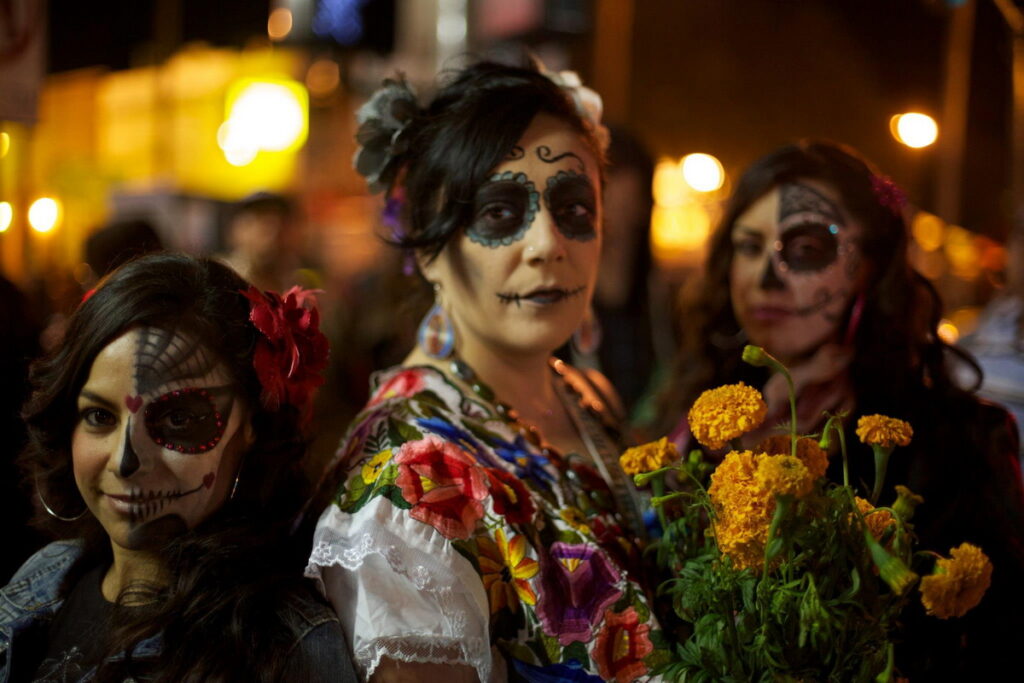
Ireland – Samhain In its country of origin, Ireland, Halloween retains its ancient Celtic roots to some extent. Bonfires are still lit in some rural areas, and children dress up in costumes, a nod to the old tradition of disguising oneself to evade vengeful spirits. Apples and nuts are used in traditional games, and the Halloween festivities are a blend of modern and ancient customs.
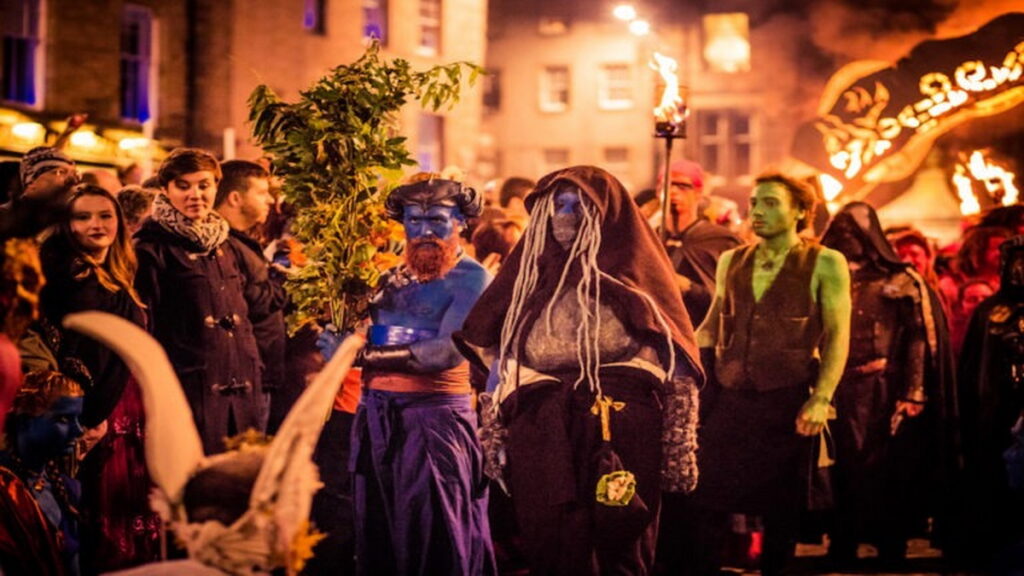
Japan – Obon Japan has its own counterpart to Halloween known as Obon, typically celebrated in August or July, depending on the region. It is a Buddhist festival during which families honor the spirits of their ancestors by lighting lanterns and setting out offerings. While not directly related to Halloween, it shares some similarities in its focus on honoring the deceased.
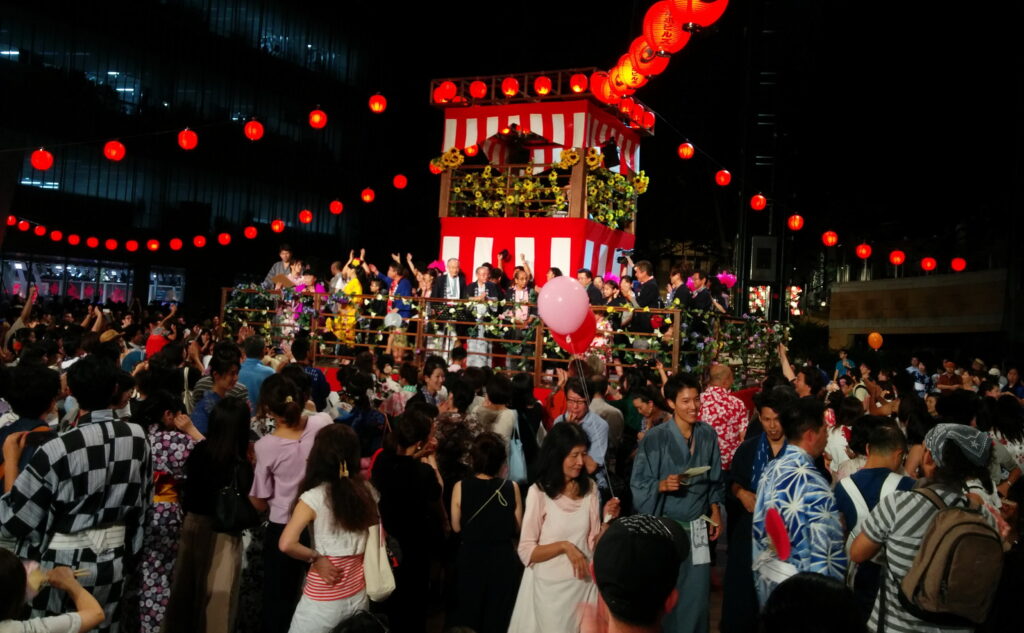
China – Hungry Ghost Festival China’s Hungry Ghost Festival, which typically falls in August, is a time when offerings are made to restless spirits. While distinct from Halloween, it reflects the belief that the deceased return to the living world during this period. People burn incense and make offerings of food and money to appease these spirits.
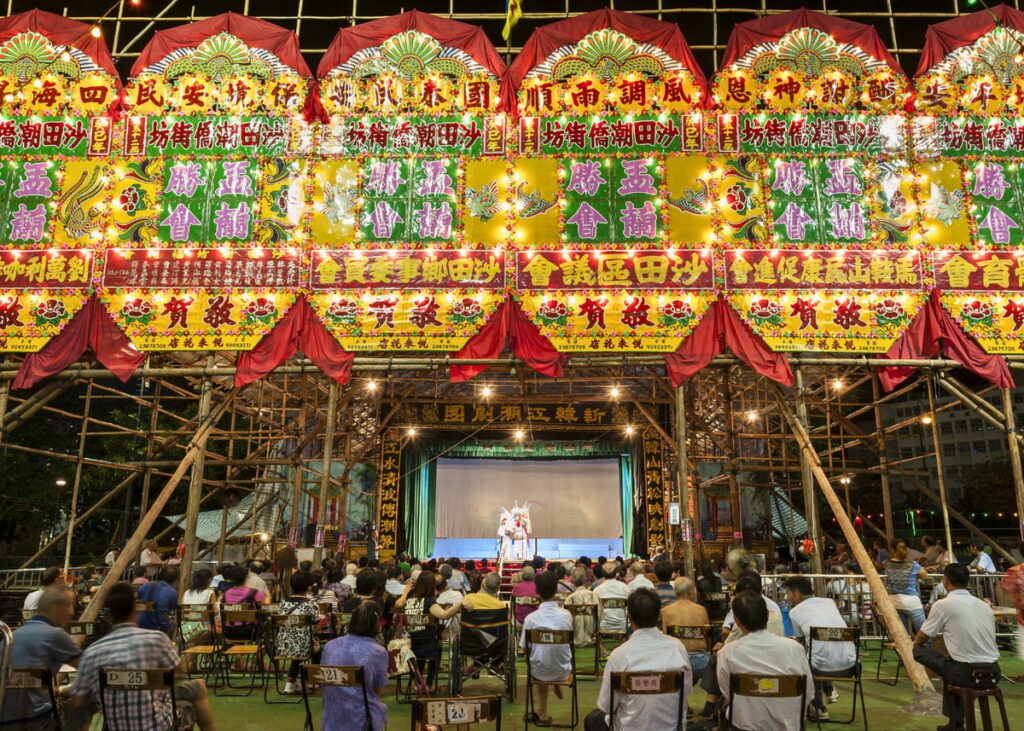
Summary
Halloween, rooted in ancient Celtic rituals and Roman influences, has evolved into a vibrant and diverse celebration in modern America. Originating from the Celtic festival of Samhain, which marked the end of the harvest season and blurred the line between the living and the dead, Halloween absorbed various cultural elements over centuries. The Roman festival of Feralia and the Christian establishment of All Saints’ Day played pivotal roles in shaping the holiday, while immigration brought diverse traditions to the United States.
Today, Halloween in America is characterized by costume-clad revelers, trick-or-treating, and creatively carved jack-o’-lanterns adorning homes. It encompasses haunted attractions, fall festivities, and a fascination with the supernatural through horror films and folklore. Furthermore, Halloween serves as a cultural melting pot, incorporating traditions from around the world, making it a dynamic and inclusive celebration that embodies the spirit of creativity, community, and tradition in American culture.



